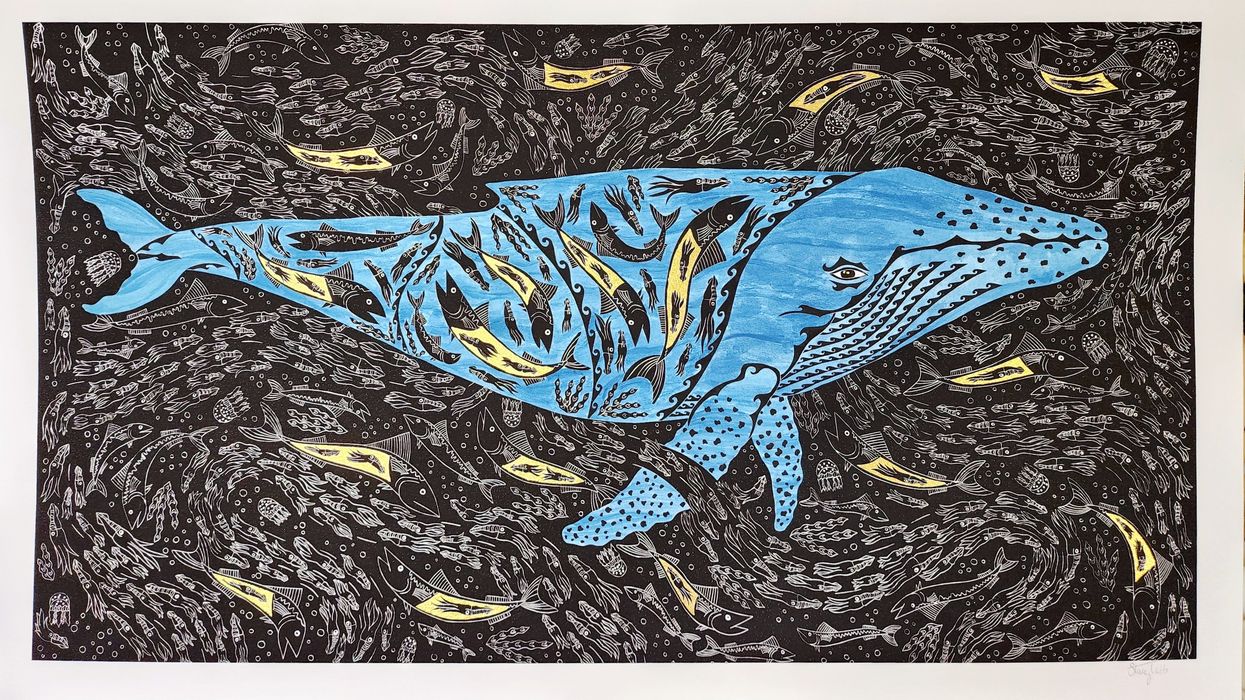
Stacy Tabb

Printmaker and orchard farmer Stacy Tabb discusses the joy and pains of living off the land.
"May I?"
I've just asked artist Stacy Tabb how she's managed to learn so many trades — web designer, leather crafter/shop owner, ceramicist, printmaker, and now orchard farmer, to name a few — and her husband, Dan, politely volunteers an answer.
'They're buying your story. They're buying a little part of you, which is not as horrible as it sounds. I'm out there for a reason. I'm happy to give that.'
Apart from a quick sidebar about pest-control strategies for small-scale tobacco growing, Dan has largely stayed off camera during my online interview with Stacy. But his wife is clearly a topic at least as near and dear to his heart as the caterpillar-liquefying efficiency of bacillus thuringiensis.
"I'm very proud of her because she has taught herself every single thing she does. She wanted to learn how to cook Turkish food; she learned how to cook Turkish food. She wanted to learn how to be a farmer; she learned how to be a farmer. She wanted to learn how to weave; she taught herself how to weave. She's taught herself everything she knows how to do right now. ... We get it from reading. We get it from doing our research."
"We're 55 years old and starting a farm," shrugs Stacy. "We've never been afraid to fail."
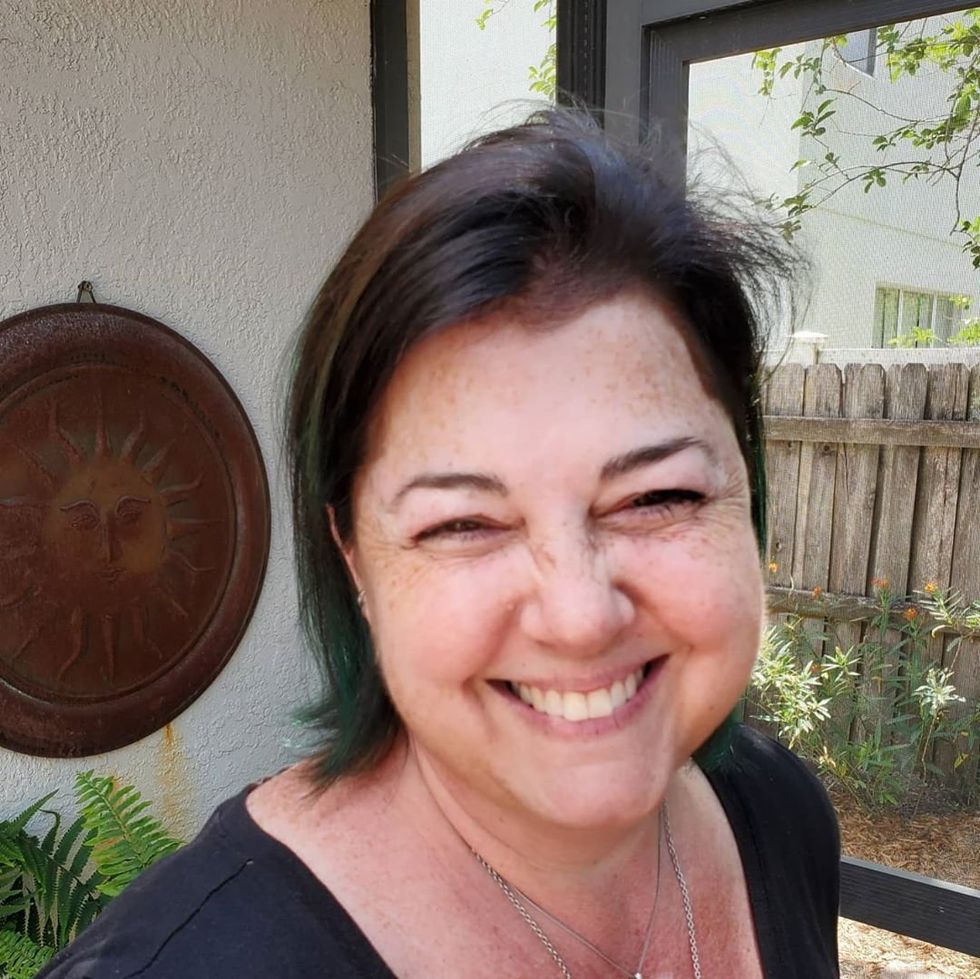
Farm?
I’ve contacted Stacy to talk about her art, which she sells online and at shows throughout the South, specifically her “You Are What You Eat” series, striking folk-art-inspired prints depicting a range of different wildlife composed of their primary food source: a humpback whale whose torso is made up of mackerel (some of which, in turn, reveal a tiny squid within), a Galapagos tortoise containing cacti, a Virginia opossum with a belly full of strawberries.
But just as we’re getting into the details of navigating a career as a professional artist, she casually mentions their side hustle: a 28-acre former hay farm in north Alabama the Tabbs purchased from Stacy's parents, who were downsizing.
Dan and Stacy are busy turning it into Ironspring Orchard & Farm, which they eventually intend to operate as a place visitors can come and pick their own fruits, vegetables, and flowers. “It's not open for business,” says Stacy. "I went ahead and made the website because I'm an idiot like that.”
Or someone who’s always looking for one more project. Currently the largest part of the farm is dedicated to chestnut trees — five acres in total. They’re hybrids that maintain the character of the original American chestnut (once “a huge food crop in this country,” says Stacy) while offering resistance to the Japanese-imported blight that wiped them out in the 1800s.
They also have three acres of black walnut trees. Stacy: “Husband always wanted to grow black walnuts, even though it'll be our kids that are harvesting them — and harvesting them for lumber."
Another three acres boast over 110 fruit trees. “We planted the trees as we bought them,” says Stacy, “which we thought was kind of crazy but also kind of interesting.” They avoided widely available fare like peaches and pecans in favor of pears and cherries and many varieties of heritage apple, including Arkansas Black, Yellow Bellflower, and Red Devil.
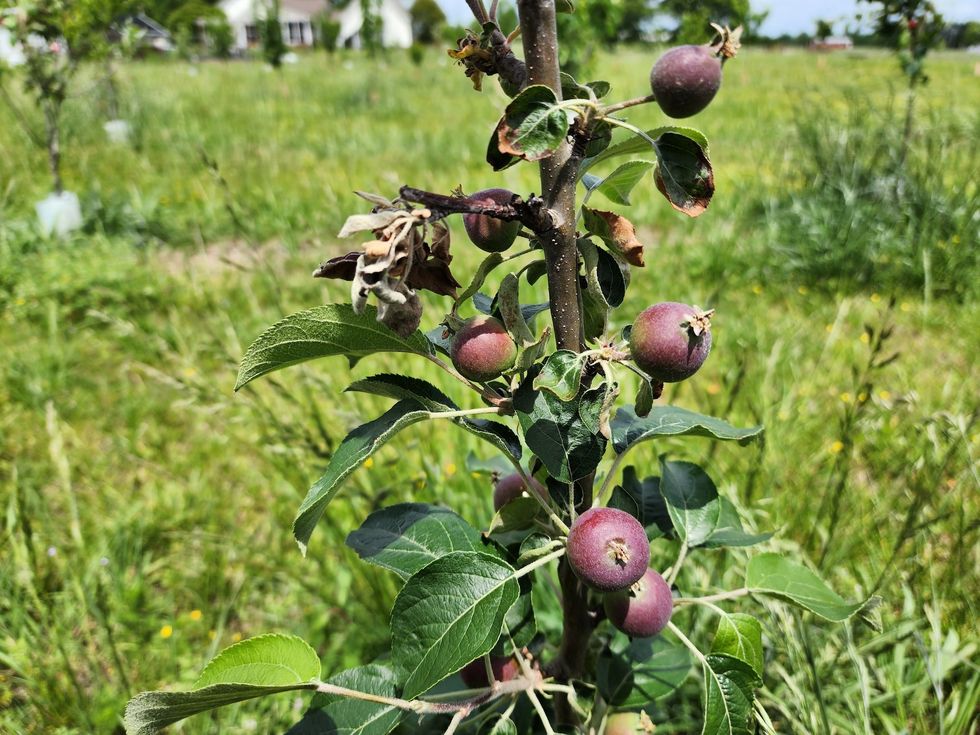
Not to mention “masses of crabapples,” which Stacy notes some people still like to use to make pies.
Stacy is quick to point out that they’re not homesteaders. While they do maintain an Instagram account, you won’t find them posting the kind of carefully curated tableaus of pastoral bliss that have become the standard for a certain type of influencer.
“We want to grow fruit and we want to grow nuts and we want to grow flowers and we want to grow food that we can sell or give to our friends,” says Stacy.
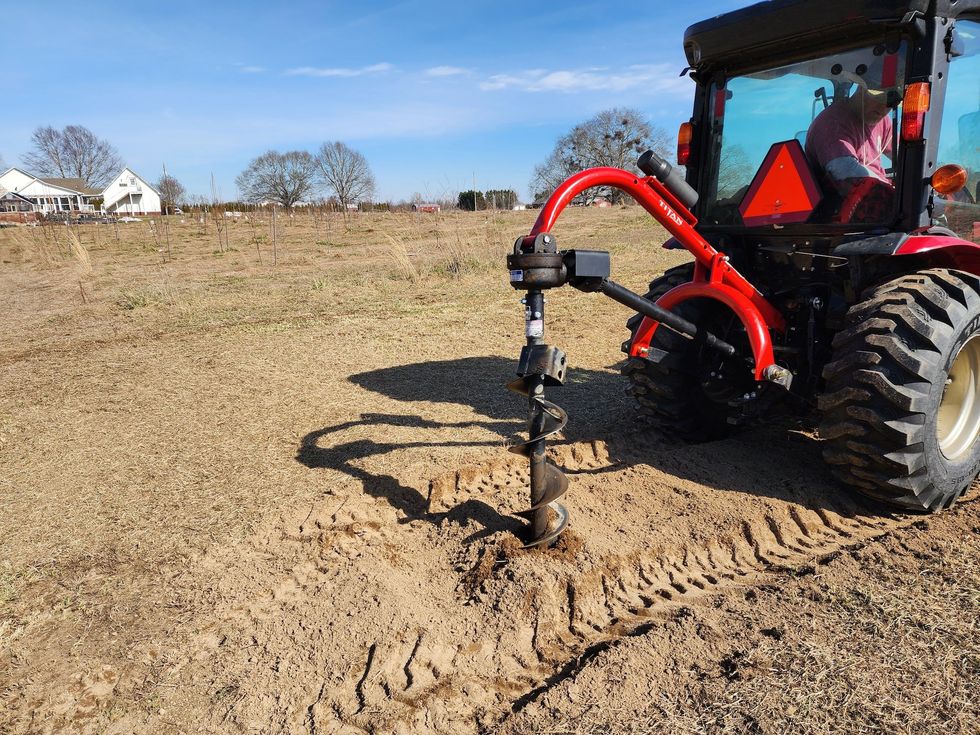
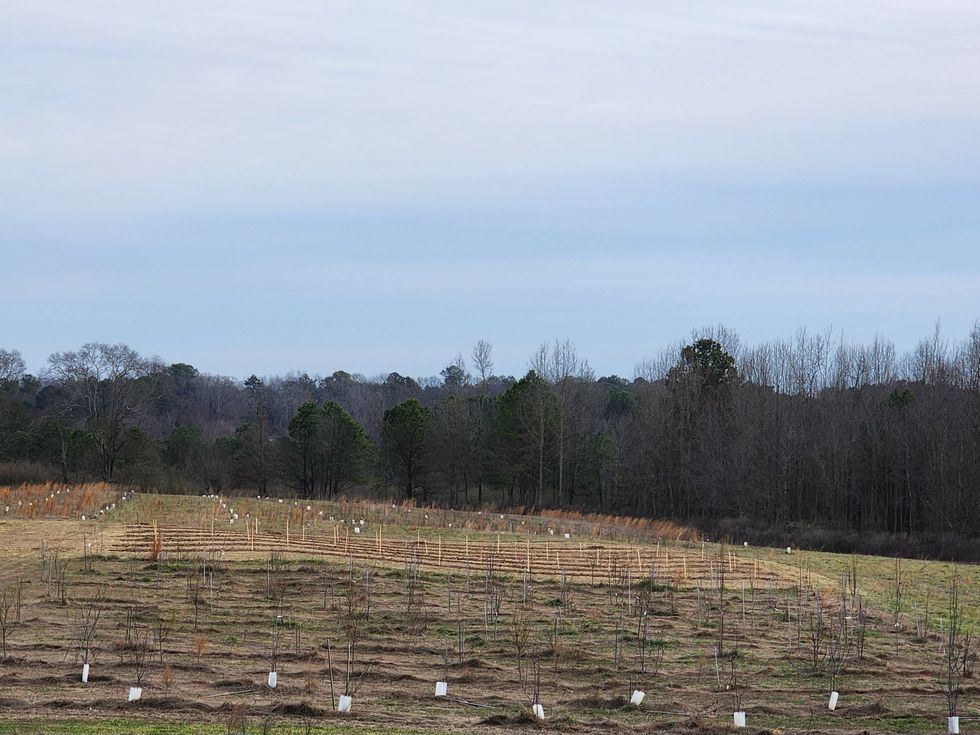
All while being good stewards of the land. “We don't want to kill the good bugs,” says Stacy, who explains that this is a matter of knowing “when to use pesticide at the right time so you don't impact the pollinators but still are able to protect your trees.”
“Right now we have Japanese beetles stripping our pear trees in the orchard, but we're able to use one of the harsher insecticides because none of those things are blooming. So they've got nothing [else] on them. No wasps, bees, nothing.”
“We don't want to ruin the soil,” Stacy adds, “and we’re trying to do this in as old-fashioned and non-chemical a way as we can. But we’re not evangelicals about ‘organic.’ It costs a lot of money to get organic certified, and the quality of the food that you get isn’t any better."
While Stacy has been making art since she was a child — “my first memory of drawing something was a bird that I [got from] a magazine or a schoolbook and they asked me if I traced it” – and went on to study graphic design, drawing, and printmaking in college, agriculture is an interest she and Dan developed later in life.
The couple met, married, and started a family in Stacy’s hometown of Huntsville (Dan is originally from California). When their two children were very young, Dan’s job as mapmaker took them to Lakeland, Florida.
"We lived in a [suburban] neighborhood because the children were small and we wanted them to have neighborhood friends,” recalls Stacy. “But we had a little quarter-acre lot, and we would always start seeds in pots with the kids when they were little. ‘Hey, let's grow some plants.’ Just another thing to teach them, another thing for them to enjoy.”
As Stacy continues, I begin to understand that she and Dan are both the kind of people for whom a modest container garden could easily lead to more ambitious undertakings. To paraphrase Ron Burgundy, it escalated quickly.
“And then we tilled up a section of the yard and grew broccoli one very cold winter. It just went crazy from there. We tilled up the entire back yard. We were growing corn, we were growing tobacco, we were growing pumpkins. We got a 55-pound pumpkin off a vine one year. It only had a cup of seeds, which I thought was kind of funny, but they were very good when we roasted them.”
It was also in Lakeland that the Tabbs began to pursue art as a profession. Dan, a disabled Navy veteran who served during Desert Storm, had spinal surgery in an attempt to alleviate debilitating back pain from his injuries. While recovering, he was unable to work for three months.
Even after this, the pain still remained. At inpatient therapy for pain management, they told him he needed to find an activity that would keep his hands moving. He chose leather crafts, reactivating the skills his father had taught him as a boy. He even had his dad’s old tools.
Once again, there were no half measures for the Tabbs. “He started making things fast and crazy at home,” says Stacy. “And I was like, we can't live with all this stuff in our house. Let's go to the market in downtown Lakeland. And so we did.”
Stacy, meanwhile, had begun designing websites for the burgeoning blogosphere. Glenn Reynolds of Instapundit was an early customer, and the business soon took off. “I did a design for every single conservative blogger that there was — and some of the lefties too.”
But she soon threw herself into learning knitting, crocheting, and weaving. After a few years of selling their wares every Saturday, the Tabbs had honed their skills enough to score a grant from a local incubator to open a studio, where they taught classes in addition to selling their creations. It went well for three years; then came COVID.
Officially deemed “non-essential,” the store had to shut down. “It killed our business and broke our hearts,” says Stacy.
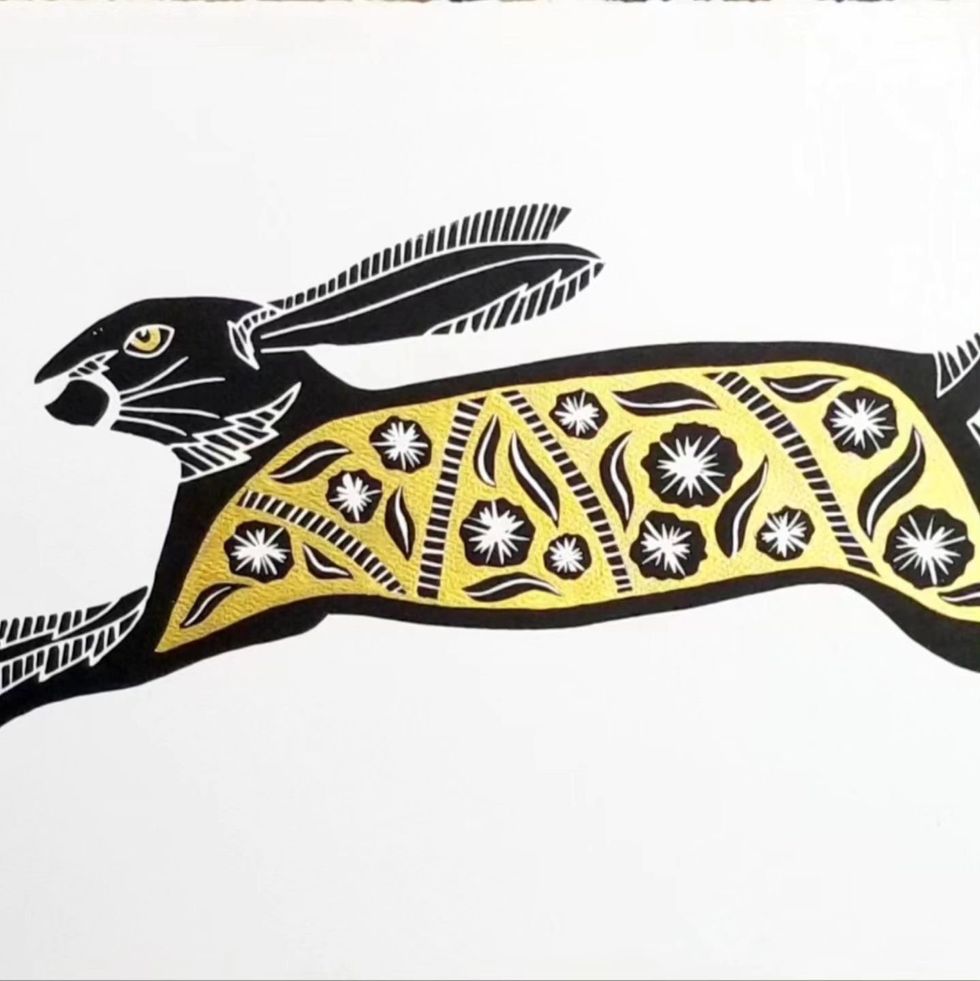
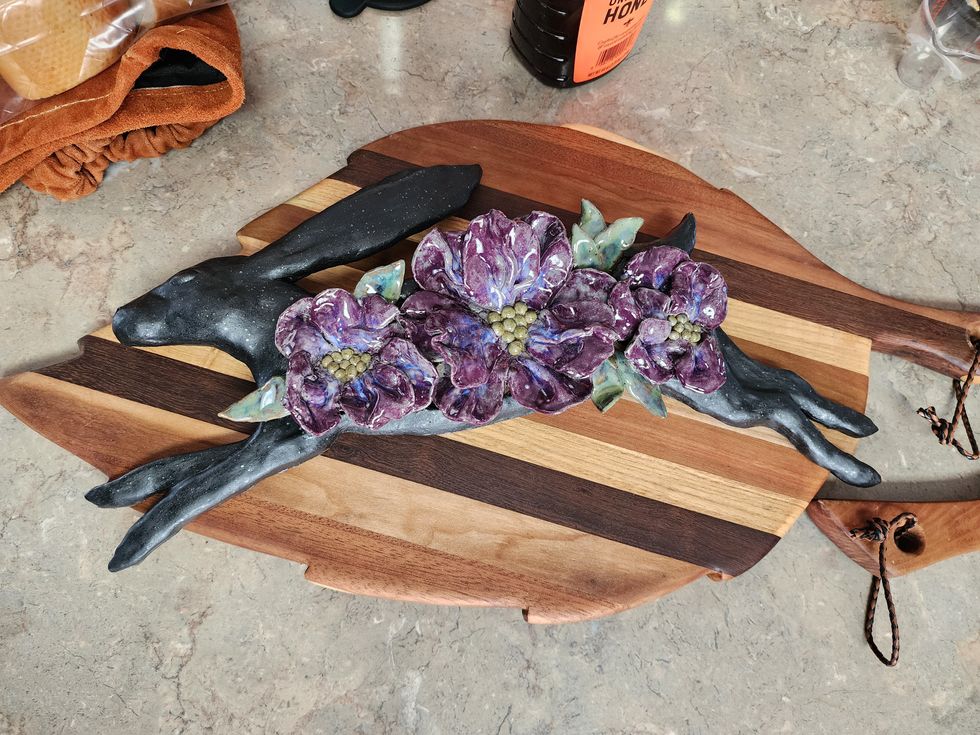
Shortly thereafter, Dan and Stacy moved back to Alabama. With their children now grown, they settled into their current life as artist farmers. Balancing the two is all about scheduling, says Stacy.
“It’s so bloody hot right now. [We do] farming in the morning, arting in the afternoon in the air conditioning. They kind of work out pretty well that way.”
Dan is also an artist, a sculptor working in stone. “Because he's a disabled veteran, he decided to pick the heaviest thing in the world to work on,” Stacy jokes.
I ask him about his work, and this time it is Stacy who fields the question for Dan. “His pieces are all related to being a disabled veteran — the challenges that veterans face. The very first one he did is called ‘23 of 22’ because it's about the veteran who chooses not to kill himself that day.”
“He makes people cry at art shows when he tells them about his pieces,” says Stacy, whose booth at art shows is usually beside her husband's. “I hear him making people cry and I’m saying, ‘Yeah, this whale has squid inside of it.’”
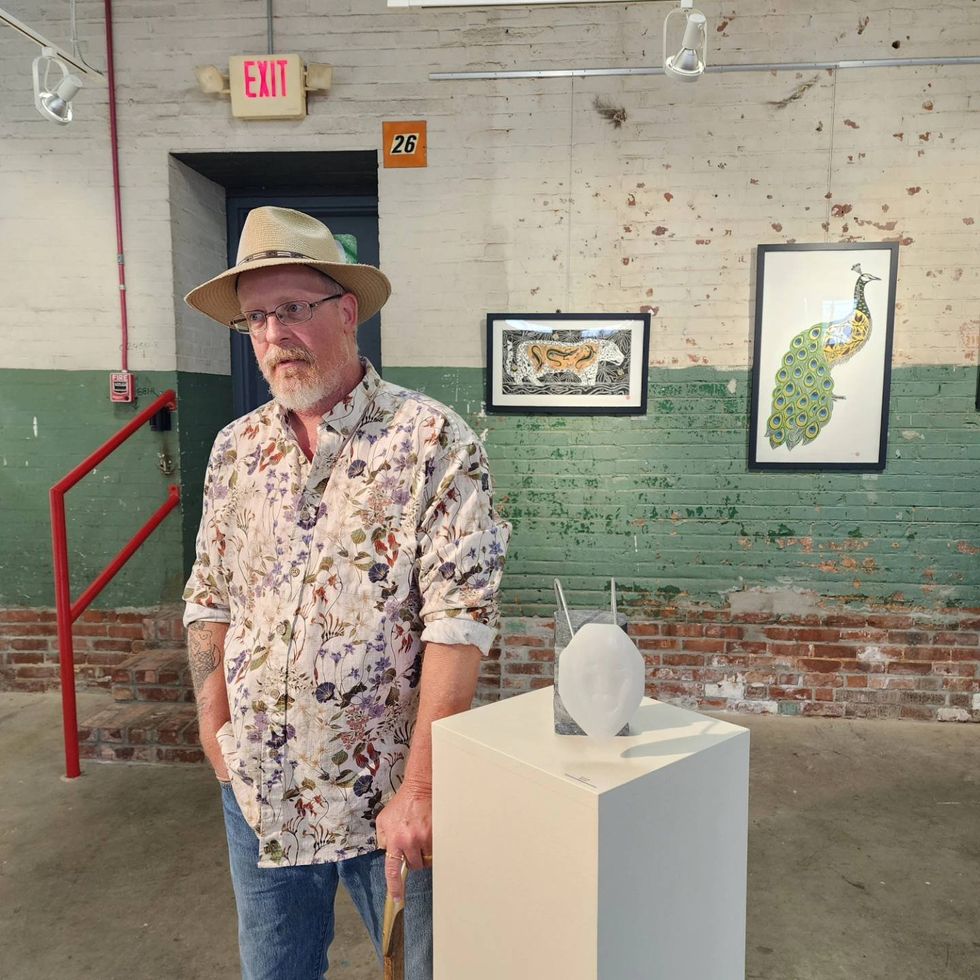
The Tabbs hit the art show circuit in the spring and fall. The travel can be a grind, but in Stacy’s experience her art sells better face to face. “They're buying your story,” she says. “They're buying a little part of you, which is not as horrible as it sounds. I'm out there for a reason. I'm happy to give that.”
Meeting her buyers can also serve as a kind of market research. It was at the art fairs that Stacy first floated the idea of her latest print in the "You Are What You Eat" series: Godzilla.
"I had been teasing this one at art shows for a long time, and they said, ‘Well, what's he going to eat?’ And I said, ‘Tokyo.’"
Stacy later reconsidered. “That wasn’t accurate. Honestly he'd only ever eaten a train, and he didn't really eat it. He just chewed on it.” Reasoning that nuclear radiation was the legendary kaiju’s main source of nourishment, Stacy ended up putting a mushroom cloud in his belly.
Sharing these details, says Stacy, helps buyers connect to the art. “It's a thing they'll put up in their house, and they'll remember that you gave them a good story.”
The internet offers the chance to reach a far larger audience, but Stacy is clear-eyed about the challenges of cultivating buyers online.
“No matter what website [you use to sell your art], whether it's Etsy or your own personal website, unless you are driving traffic to it from a third party like your social media, it's not gonna do anything. You just hang it out there with the billions of other sites that are out there.”
"It's a slog,” Stacy admits. “You have to try and figure out what the algorithm wants, and nobody knows what that is. Nobody can tell you. I try to post once a day. I don't always do that, though.”
“The way it works is the more people you have commenting and liking and sharing your piece, the more the algorithm likes it. That is very tricky to make happen.
"A lot of times people scroll and read, [but] they're not liking anything. They're just scrolling and reading. They might appreciate something, but if they don't stop and like it or drop a comment on it, it doesn't help us very much. I'm glad we're entertaining them, but it doesn't do a thing.”
Building an art career requires patience and persistence. Apparently the same could be said about running an orchard.
“We're going to have to fight the birds for every cherry that we get,” says Stacy. “The cherries flowered this year, but they didn't fruit. They're not quite ready yet. Next year we expect to have to fight. We're going to have to fight everything for fruit.”
It’s a fight Stacy seems to enjoy, just as she seems to enjoy what she calls the “fiddly,” technically unforgiving process of carving her designs into linoleum print blocks.
“I start with the drawing, I put the drawing on the block, and then I have to start carving. And if a blade slips, then I have to do something different or I have to start over. It can be monstrous.”
Stacy plans to conclude the “You Are What You Eat” series with its 50th piece, which she intends to be a bald eagle. Then she’ll put them together in a book.
And after that? Stacy repeats a bit of advice she once gave a young painter about feeling stuck. It’s advice that she and Dan have clearly taken in forging the adventurous yet grounded path of their life together.
“Do something different. Go work in clay, work in printmaking, work in [fabric]. Do anything different as long as it's still creative and as long as you're keeping the avenue open.”
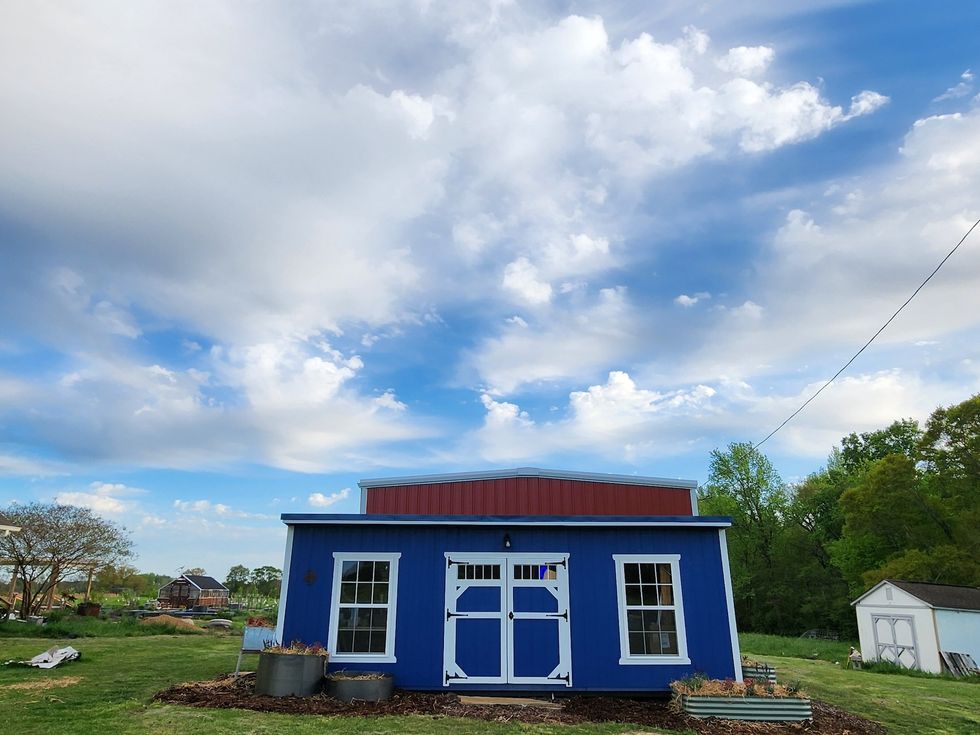
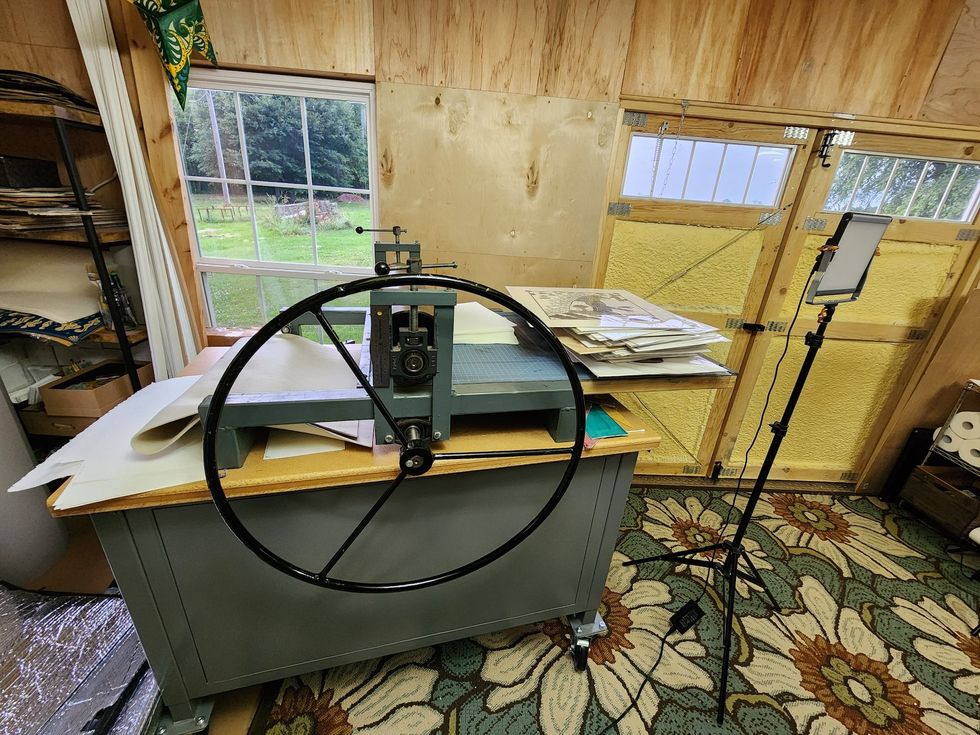
The photos below show the progression of "You Are What You Eat" #30: Humpback Whale from initial drawing, to carved linoleum block, to print, and to watercolored print.